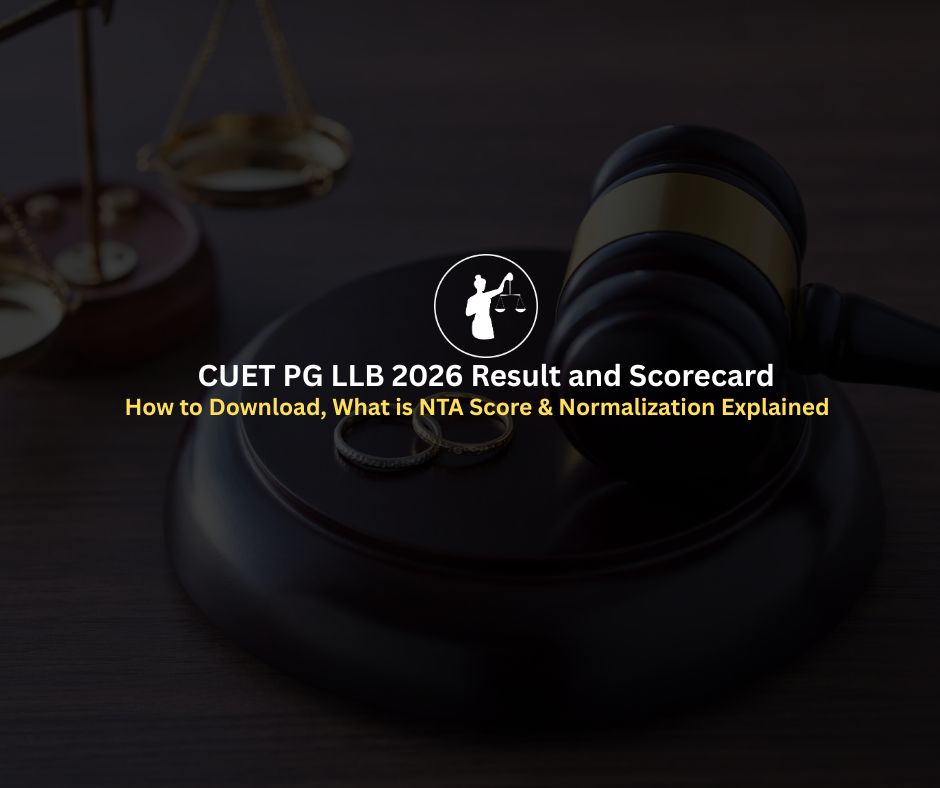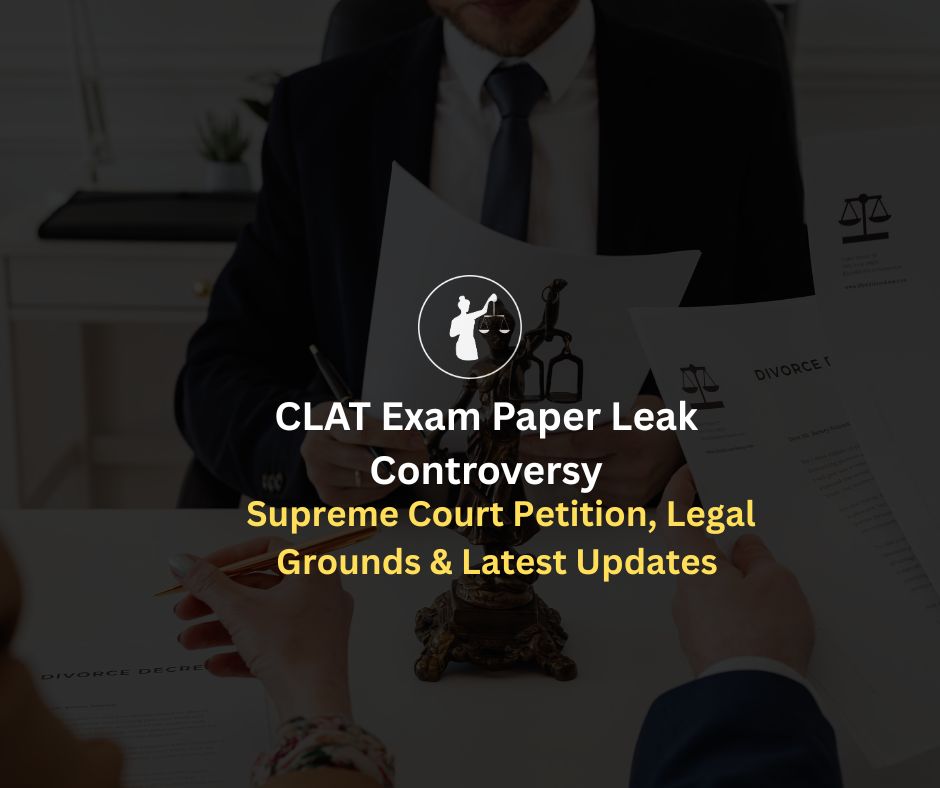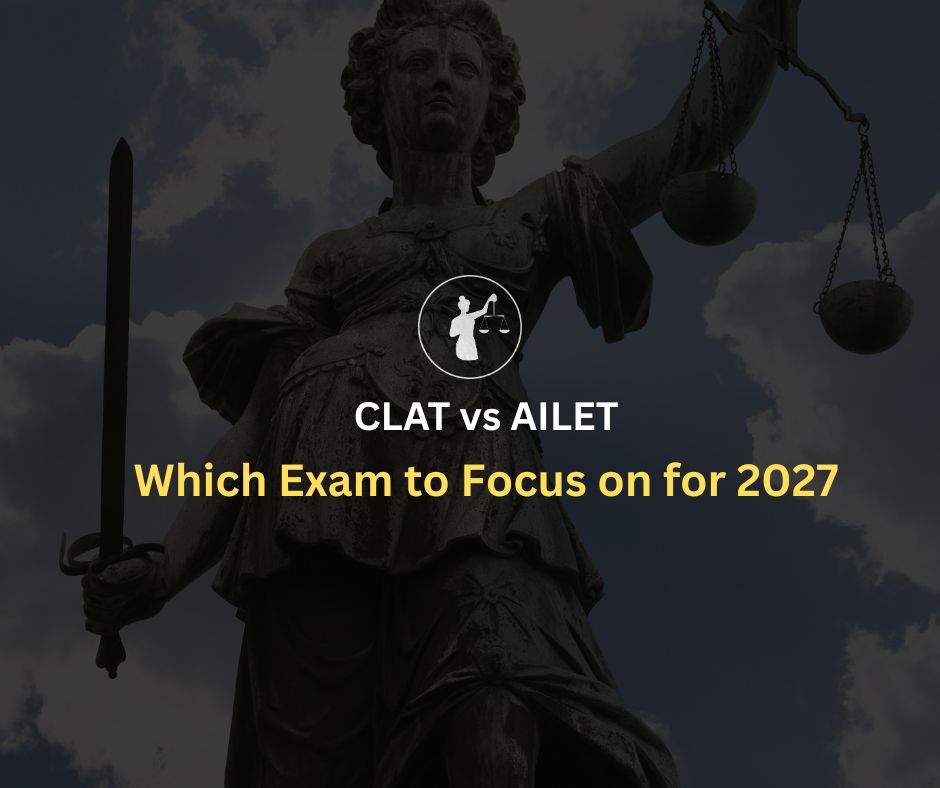The Common Law Admission Test (CLAT) 2026 is a highly competitive, national-level entrance exam conducted for admission to 22 National Law Universities (NLUs) in India.
It is the gateway to prestigious undergraduate (UG) and postgraduate (PG) law programs, offering students the opportunity to build a successful legal career.
Signup to NLTI for free Mockups, past papers and much more
Who conducts CLAT?
The exam is organized by the Consortium of National Law Universities (NLUs) on a rotational basis.
Who should apply?
Students aspiring for 5-year integrated law programs (B.A. LL.B., B.Com LL.B., etc.) and LL.M. courses at NLUs and other participating institutions.
Why is CLAT important?
Apart from NLUs, top private universities and law schools also accept CLAT scores, making it one of the most sought-after law entrance exams in India.
Since thousands of aspirants compete for limited seats, a well-structured preparation strategy, starting with a deep understanding of the syllabus, is crucial for success.
Aspirants must have a clear grasp of the CLAT syllabus 2026 to maximize their preparation. Here's why:
✅ Strategic Preparation: Understanding the syllabus helps students focus on important topics and avoid wasting time on irrelevant content.
✅ Efficient Time Management: By breaking down the syllabus into sections (English, Legal Reasoning, Logical Reasoning, GK, and Quantitative Techniques), aspirants can allocate time effectively.
✅ Identifying Strengths & Weaknesses: A detailed syllabus breakdown enables students to recognize areas they need to improve and prioritize accordingly.
✅ Selecting the Right Study Materials: The syllabus serves as a guideline for choosing the best books, resources, and coaching support.
✅ Better Exam Performance: Being well-versed with the syllabus structure ensures students can confidently tackle different types of questions, reducing exam-day stress.
Below is a detailed breakdown of the exam mode, question distribution, marking scheme, and sections covered.
Offline (Pen & Paper-based Exam) – CLAT 2026 will be conducted in a traditional OMR-based format, where students must fill answers in a physical answer sheet using a black/blue ballpoint pen.
UG CLAT: 150 Multiple-Choice Questions (MCQs)
PG CLAT: 120 Multiple-Choice Questions (MCQs)
Each question will have four options, and students must select the correct one.
+1 mark for every correct answer.
-0.25 marks for each incorrect answer.
No marks will be deducted for unattempted questions.
Total Time: 2 hours (120 minutes)
Aspirants must manage their time effectively across all sections to maximize their scores.
CLAT 2026 will assess students in five key subjects:
👉 Note: The exact number of questions per section may vary slightly each year, but the weightage remains consistent.
Understanding the CLAT 2026 exam pattern is the first step toward effective preparation. With a time-bound test, aspirants must practice mock tests, improve speed and accuracy, and focus on conceptual clarity in each section.
The English Language section in the CLAT 2026 syllabus plays a crucial role in determining your overall score. It primarily tests your reading comprehension, vocabulary, and grammar skills. Since CLAT is a passage-based exam, mastering comprehension techniques and language fundamentals is essential.
Below is a detailed breakdown of the topics covered and the best preparation strategies for the CLAT English section.
This is the most important part of the English section in the CLAT syllabus 2026. Passages (approx. 450 words) are extracted from newspapers, editorials, legal articles, and literature.
✅ Types of Questions:
Inference-Based: Understanding the deeper meaning of the passage.
Fact-Based: Identifying direct answers from the passage.
Tone & Theme: Recognizing the author’s perspective.
Main Idea & Summary: Condensing the passage into key takeaways.
Tip: Read editorials from The Hindu, The Indian Express, and legal websites like LiveLaw & Bar & Bench to improve comprehension speed.
A strong vocabulary helps in understanding passages quickly and answering word-based questions.
✅ Important Areas:
Synonyms & Antonyms: Words with similar/opposite meanings.
Word Usage: Correct contextual application of words.
Idioms & Phrases: Common English expressions.
Tip: Maintain a vocabulary journal and learn 5-10 new words daily from sources like Word Power Made Easy (Norman Lewis) and newspapers.
CLAT 2026 may include grammar-based MCQs, requiring you to identify and correct errors.
✅ Important Topics:
Subject-Verb Agreement
Tenses & Modifiers
Prepositions & Articles
Active vs. Passive Voice
Direct vs. Indirect Speech
Tip: Revise grammar rules using Wren & Martin’s High School English Grammar & Composition and practice error detection exercises.
These topics assess logical sequencing and contextual understanding.
✅ Para Jumbles: Arranging jumbled sentences into a coherent paragraph.
Tip: Focus on transition words (however, therefore, meanwhile) and logical connectors to identify sentence flow.
By mastering these areas in the CLAT 2026 syllabus, aspirants can significantly boost their English Language scores and improve their overall CLAT rank.
The Current Affairs & General Knowledge section in the CLAT 2026 syllabus is crucial for scoring well. This section tests a candidate’s awareness of recent events, legal developments, and static GK topics. A strong foundation in both Static GK and Current Affairs will give aspirants a competitive edge.
Let’s break down the important topics and the best preparation strategies to ace this section in CLAT 2026.
1. Static GK (Pre-determined, Concept-Based Knowledge)
Static GK refers to factual information that does not change over time. This includes fundamental topics related to India and the world.
✅ Important Areas:
Indian Polity: Constitution, Fundamental Rights & Duties, President & Prime Minister, Parliament, Supreme Court, Important Amendments.
History: Ancient, Medieval & Modern Indian History, Freedom Struggle, Important Leaders.
Geography: States & Capitals, Rivers, Mountains, National Parks, Climate Zones.
Economy: RBI, Banking System, Budget, Economic Policies, Important Reports.
Science & Technology: ISRO, Space Missions, Nobel Prizes in Science, Recent Innovations.
Tip: Read NCERT books (Class 6-10) for Polity, History, and Geography and Lucent’s General Knowledge for quick revision.
2. Current Affairs (Dynamic, News-Based Knowledge)
Current Affairs focuses on recent developments in India and the world, especially in law, politics, and governance.
✅ Important Areas:
Legal & Political Developments: New laws, Constitutional Amendments, Important Bills, Government Schemes.
International News: Global Summits, Treaties, Agreements, Major Events.
Supreme Court Judgments: Landmark cases, Constitution Bench rulings, Human Rights issues.
Government Policies & Reports: Budget Announcements, RBI Guidelines, Environmental Laws, Social Justice Reforms.
Awards & Recognitions: Nobel Prize, Padma Awards, Sports Achievements.
Tip: Focus on the past 6-12 months of current affairs before the CLAT 2026 exam and make short notes for revision.
The Legal Reasoning section in CLAT 2026 evaluates a candidate’s ability to understand and apply legal principles in various situations. It does not require prior legal knowledge, but having a basic understanding of laws and landmark judgments will be an advantage.
Let’s explore the key topics, preparation strategy, and best books to ace this section.
📜 1. Understanding Legal Principles
Legal Reasoning questions are based on hypothetical scenarios where candidates must apply legal principles to reach a logical conclusion.
✅ Important Areas:
📌 Contract Law – Agreements, Breach of Contract, Valid & Void Contracts.
📌 Criminal Law – Offenses, Mens Rea (Intent), Actus Reus (Action), Defenses in Criminal Law.
📌 Constitutional Law – Fundamental Rights, Directive Principles, Separation of Powers.
📌 Law of Torts – Negligence, Defamation, Strict & Absolute Liability.
⚖️ 2. Application of Legal Rules in Case Laws
This section tests how well you apply legal principles to case scenarios. Instead of memorizing laws, focus on understanding how they work in real-life situations.
✅ Common Question Types:
📌 A principle is given, followed by facts you must apply the principle and choose the most logical conclusion.
📌 Matching case facts with precedents or similar case laws.
📌 Identifying errors in legal reasoning.
Tip: Practice previous CLAT legal reasoning questions to familiarize yourself with patterns.
By mastering legal reasoning and following a structured preparation strategy, you can score high in CLAT 2026 and boost your overall percentile
The Logical Reasoning section in CLAT 2026 tests your ability to analyze patterns, evaluate arguments, and draw logical conclusions. It is divided into two broad categories:
✅ Analytical Reasoning – Tests problem-solving skills using structured logic.
✅ Critical Reasoning – Evaluate your ability to understand, analyze, and manipulate arguments.
Let's dive into key topics, best preparation tips, and recommended books
🔍 1. Analytical Reasoning
This section involves pattern recognition and logical structuring to solve problems.
Seating Arrangements
Linear & Circular Arrangements, Positioning.
Blood Relations
Family Tree, Coded Relations, Generation-based Problems.
Syllogisms
Logical Statements, Conclusion-based Problems.
Coding-Decoding
Letter & Number Coding, Symbol-based Decoding.
Puzzles
Mathematical & Logical Puzzle-based Questions.
Tip: Solve previous year CLAT questions and puzzle books to strengthen your analytical reasoning skills.
🧩 2. Critical Reasoning
Critical reasoning tests how well you understand, analyze, and evaluate arguments.
Assumptions
Identifying implicit ideas in statements.
Inferences
Understanding conclusions drawn from given premises.
Strengthening & Weakening Arguments
Evaluating the impact of additional information on an argument.
Cause & Effect
Identifying logical relationships between events.
Statement & Conclusion
Drawing logical conclusions from a given set of premises.
Tip: Read editorials from The Hindu & Indian Express to improve argument analysis skills.
The Quantitative Techniques section in CLAT 2026 focuses on basic mathematical concepts and data interpretation skills. This section is designed to test numerical ability, logical application, and problem-solving skills.
➗ 1. Arithmetic (Most Important)
This section includes basic mathematical operations and is heavily tested in CLAT.
Percentages
Conversion, Increase/Decrease, Applications in DI.
Profit & Loss
Discounts, Marked Price, Simple Transactions.
Ratios & Proportions
Partnership, Mixture & Allegations.
Time, Speed & Distance
Boats & Streams, Trains, Relative Speed.
Time & Work
Pipes & Cisterns, Work Efficiency.
Tip: Master short tricks for quick calculations to save time in the exam.
📊 2. Data Interpretation (DI)
Data Interpretation questions involve analyzing numerical data from charts and tables.
Tables Numerical Data
Bar Graphs
Pie Charts
Line Graphs
Caselets
Tip: Practice solving DI sets within a time limit to improve speed and accuracy.
🔢 3. Number System & Algebra (Basic Topics Only)
This section covers fundamental mathematical concepts to test logical reasoning skills.
Number System – LCM & HCF, Remainders, Factors.
Simplifications – BODMAS, Fractions, Decimals, Surds.
Basic Algebra – Simple Equations, Factorization, Linear Equations.
Probability & Statistics – Mean, Median, Mode, Basic Probability.
Tip: Strengthen mental math skills to solve calculations quickly without a calculator.
📚 Best Books for Quantitative Techniques in CLAT 2026
📖 CLAT Preparation Guides & Mock Test Books
Pearson CLAT Guide
Universal’s Guide to CLAT & LLB Entrance Examination
🖥️ Online Resources & Websites
Law Entrance Prep Platforms (CLATNLTI, TopRankers, Lawctopus) – Offer mock tests, analysis, and study plans.
YouTube Channels (Drishti IAS, Unacademy CLAT, StudyIQ) – Best for visual learning & concept explanations.
Daily News Websites (The Hindu, Live Law, Bar & Bench) – Important for current affairs & legal developments.
Success in CLAT 2026 depends on a strategic approach understanding the CLAT syllabus, choosing the right books, and practicing consistently.
The recommended resources for English, Legal Reasoning, Logical Reasoning, GK, and Quantitative Techniques will help you build a strong foundation and boost your confidence.
Want expert guidance, structured study plans, and top-notch mock tests? Join NLTI's CLAT 2026 Coaching Program and take your preparation to the next level!
Enroll now and start preparing with the best.
👉 Join Now & Ace CLAT 2026
Frequently Asked Questions on CLAT 2026
What is CLAT 2026 and why is it important?
CLAT 2026 is a national-level entrance exam for admission to undergraduate (UG) and postgraduate (PG) law programs at 22 National Law Universities (NLUs) in India.
It is also accepted by top private law schools, making it highly competitive and prestigious.
Who conducts the CLAT exam?
The Consortium of National Law Universities (NLUs) conducts CLAT on a rotational basis.
What courses can I apply for through CLAT 2026?
You can apply for 5-year integrated law programs like B.A. LL.B., B.Com LL.B., etc., and postgraduate programs like LL.M.
What is the mode of the CLAT 2026 exam?
The exam is conducted offline in a traditional OMR-based format using a pen-and-paper method.
How many questions are there in CLAT 2026?
UG CLAT: 150 Multiple-Choice Questions (MCQs).
PG CLAT: 120 Multiple-Choice Questions (MCQs).
What is the marking scheme for CLAT 2026?
+1 mark for every correct answer.
-0.25 marks for every incorrect answer.
No negative marking for unattempted questions.
What is the duration of the CLAT 2026 exam?
The exam duration is 2 hours (120 minutes).
What are the subjects covered in CLAT 2026?
The subjects are English Language, Current Affairs & General Knowledge, Legal Reasoning, Logical Reasoning, and Quantitative Techniques.
How should I prepare for the English Language section in CLAT 2026?
Focus on reading comprehension, vocabulary, grammar rules, and sentence structuring.
Regularly read newspapers like The Hindu and Indian Express to enhance comprehension skills.
What is the importance of Legal Reasoning in CLAT 2026?
It tests your ability to apply legal principles to hypothetical scenarios, including concepts from Contract Law, Criminal Law, Constitutional Law, and Law of Torts.
How can I improve my Current Affairs & GK preparation for CLAT 2026?
Stay updated with recent legal developments, national and international news, Supreme Court judgments, and government policies. Refer to sources like LiveLaw, Bar & Bench, and newspapers.
What are the key topics covered under Logical Reasoning for CLAT 2026?
Analytical reasoning (Puzzles, Coding-Decoding, Blood Relations) and Critical reasoning (Assumptions, Inferences, Strengthening & Weakening Arguments).
Is there any negative marking in CLAT 2026?
Yes, 0.25 marks are deducted for every incorrect answer. However, no marks are deducted for unattempted questions.





